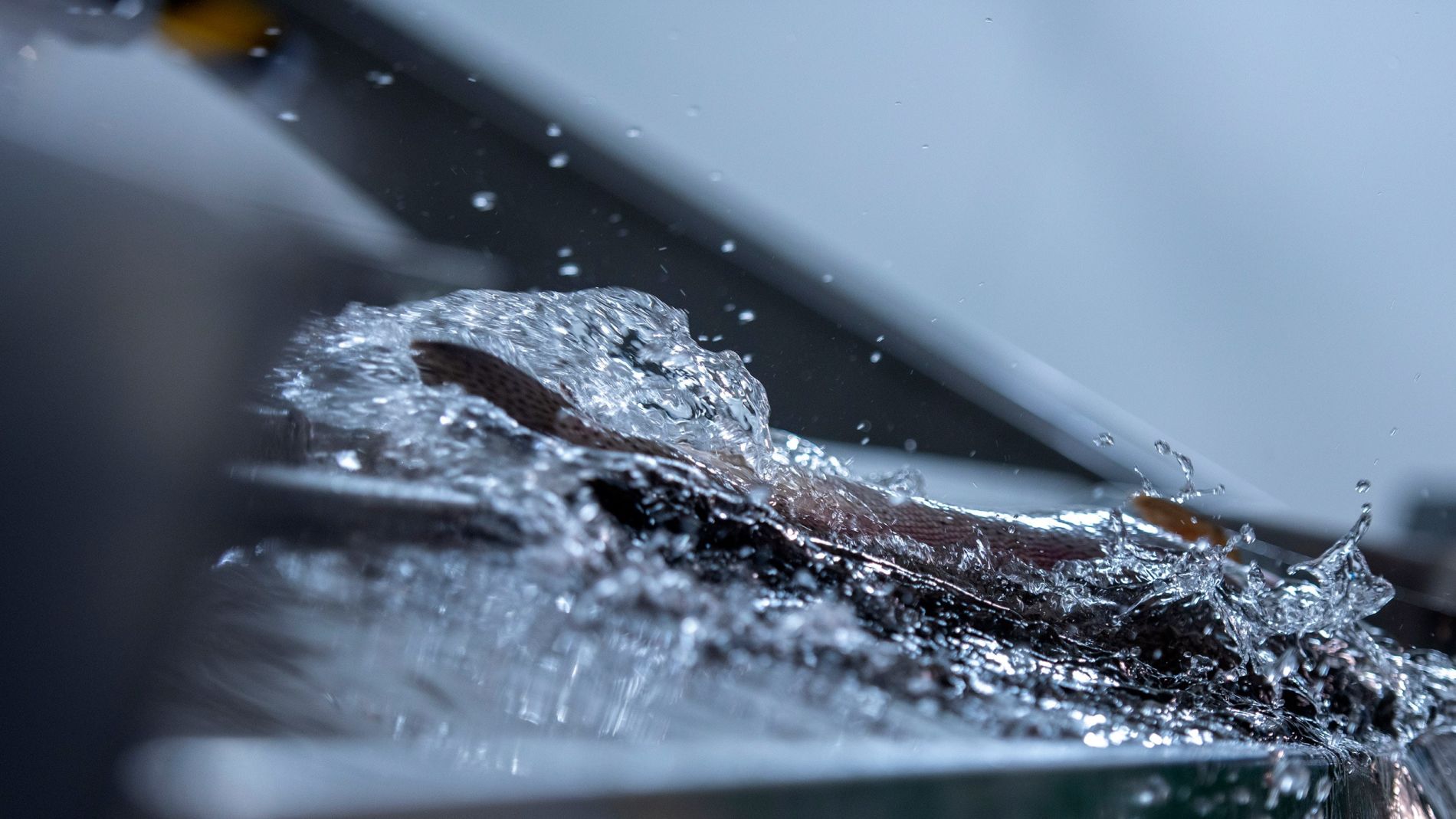Innovating for sustainable outcomes
Petuna is at the forefront of innovation in our journey of continuous improvement.
While we strive to be a best-practice example, we know the greatest outcomes are achieved through shared experience and collaboration. We work with our fellow aquaculture producers, communities, and regulators to develop technology and practices, improving the sustainability of the whole Tasmanian industry.
The fish in this video were humanely killed before the egg extraction process.
The Fish-In-Fish-Out (FIFO) ratio shows the amount of wild fish we use to produce 1kg of salmon or trout.
- A FIFO ratio that is less than 1.0 must be achieved to become a net producer of seafood, which is an important achievement because it helps expand the ocean’s limited seafood resources and feed the world’s growing demand for seafood.
- For example, a FIFO of 0.7 means only 0.7kg of wild fish is required to produce 1kg of salmon or trout.
The charts below show measures of:
- Forage Fish Inclusion Factor (FFIF) – this is a measure of the amount of wild fish ingredients included in the salmon or trout feeds.
- Feed Conversion Ratio (FCR) – this is a measure of how efficiently the farmed fish convert the feed into body weight.
- Fish In Fish Out (FIFO) ratio – this is calculated as FFIF x FCR – how much wild fish is in the feed multiplied by how efficiently the farmed fish convert that feed.
- Economic Feed Conversion Ratio (EFCR) – this is total weight of feed divided by net production.

